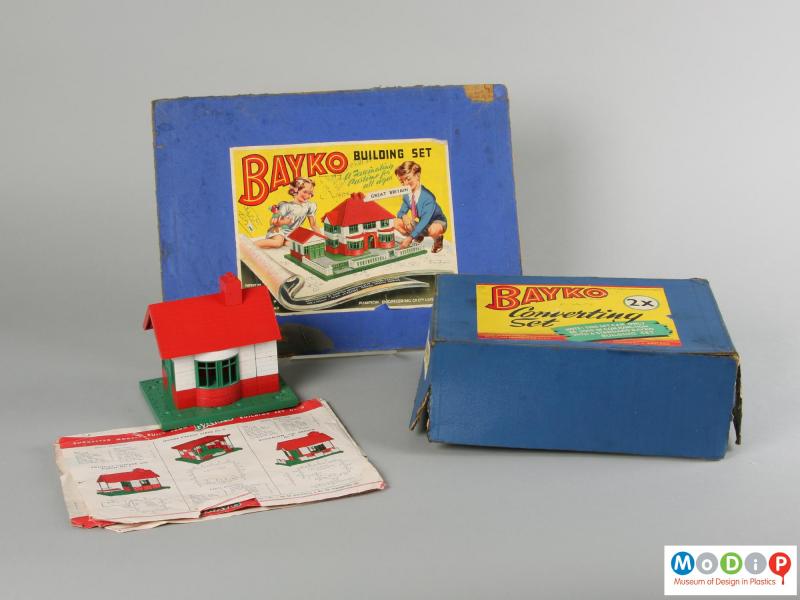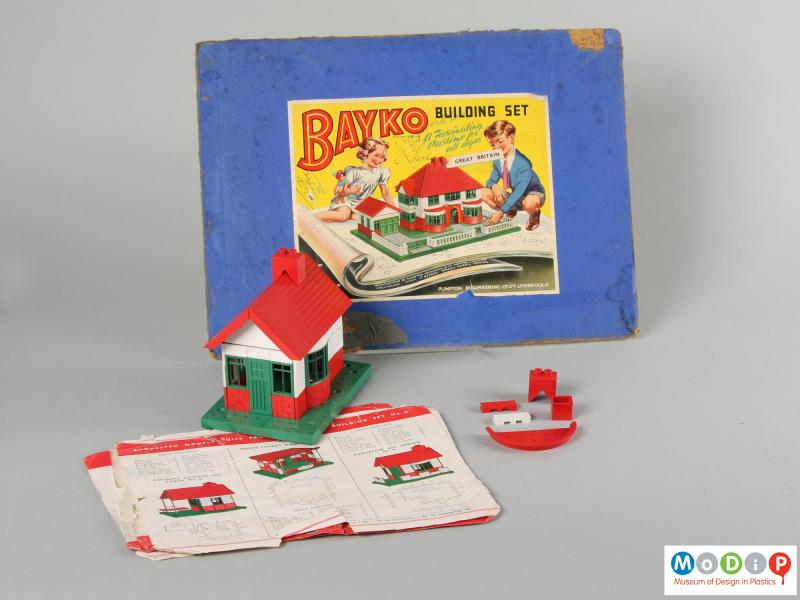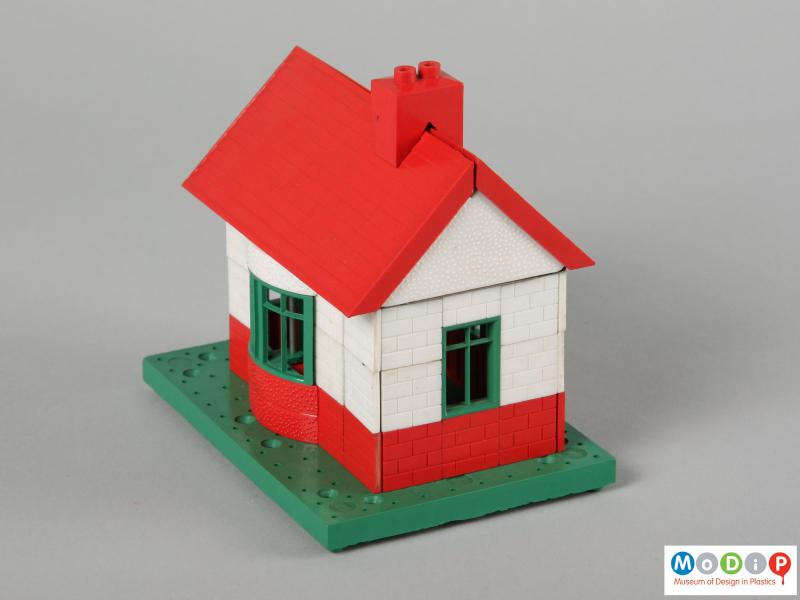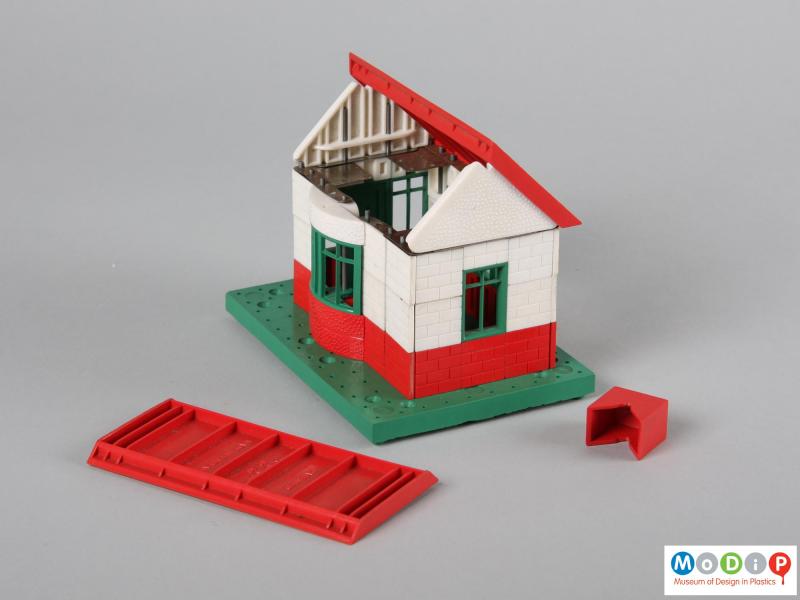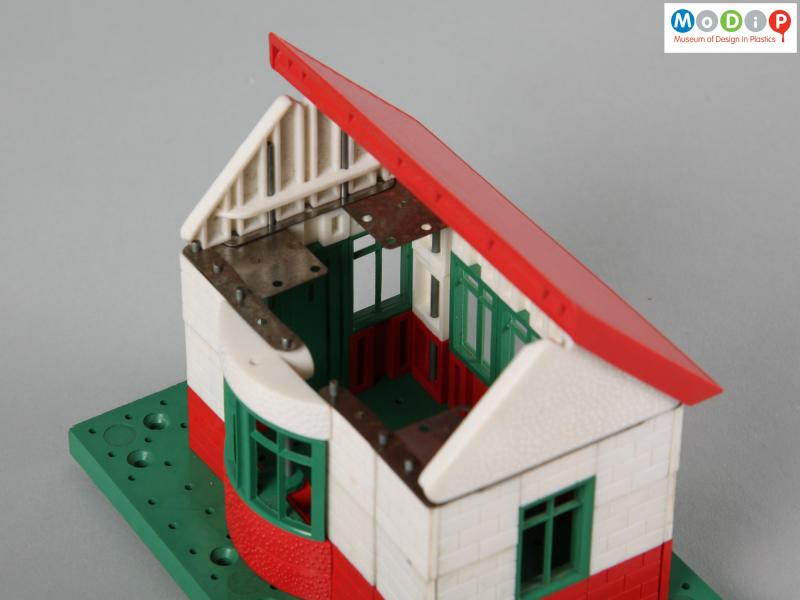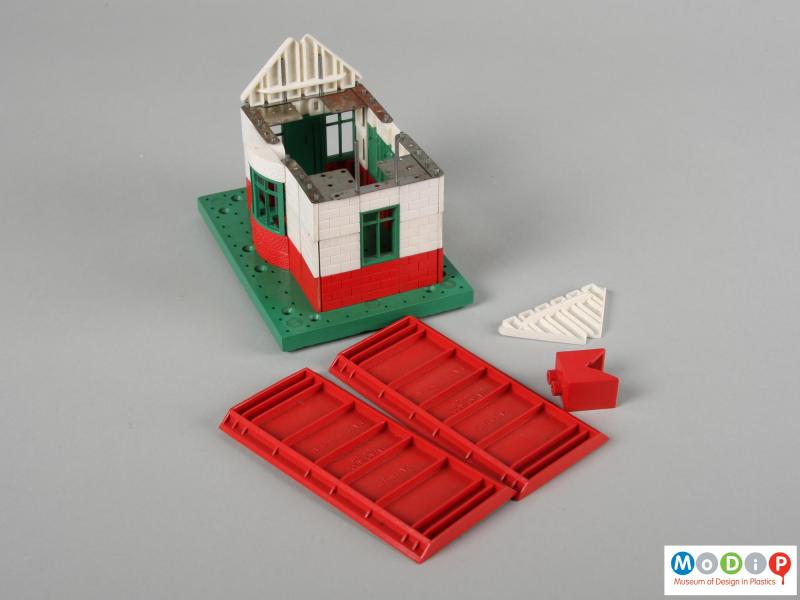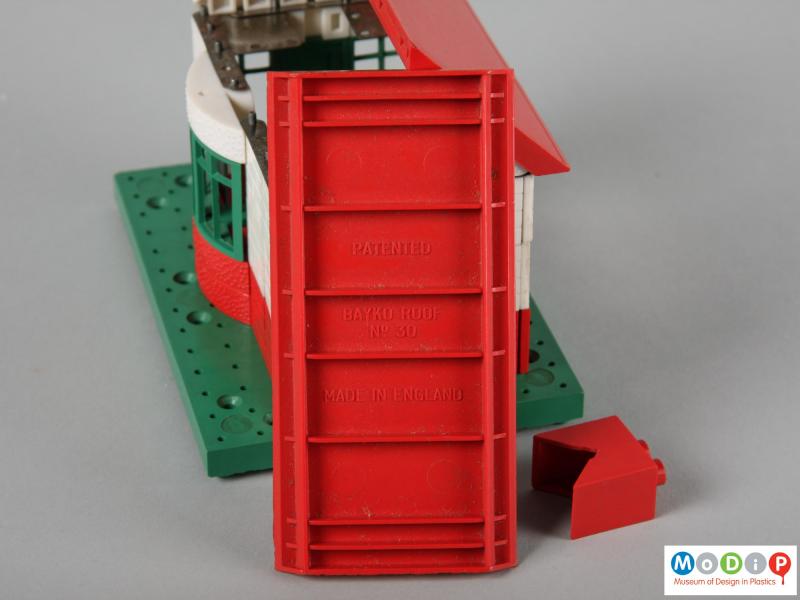Classification
Description
A building construction kit consisting of green bases with holes in them, metal rods which can be held vertically in the bases, red and white bricks, green windows and other parts that can be slotted between pairs of rods, and red roofs of various types. The name Bayko was derived from Bakelite, the material used to make the early sets. These sets were available from 1934 to 1967. This example dates from the 1950s and is made from urea formaldehyde. It came in a carboard box with an image on its lid depicting a boy and a girl admiring a model house placed on building plans. The image was also used on posters. Model plans with building instructions are included with the set. Patent no 422645, foreign patents pending. This set was designed by Charles Plimpton and manufactured by the Plimpton Engineering Company ltd.
Designers & Manufacturers
Designer (Person)
Manufacturer
Object number
AIBDC : 006220
Date
1950 - 1959 (circa)

